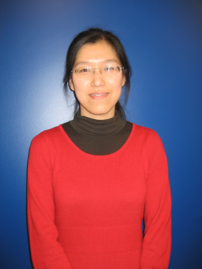Neodymium-doped waveguide amplifiers and lasers for integrated optical applications
Promotion date: 23. April 2010
Promotors: Prof. Dr. Markus Pollnau and Prof. Dr. Alfred Driessen
| Nd3+-complex-doped, photo-defined polymer channel waveguides were realized on thermally oxidized silicon wafers, with a simple and reproducible fabrication procedure, by dividing the functionalities of photo-definition and active doping over two different polymers. Gain values for these polymer amplifiers were demonstrated. Furthermore, laser experiments of polymer channel waveguides, have resulted in lasers operating near 1060.2 nm and 878 nm, showing great application potential, e.g. for use as a miniaturized integrated light source for lab-on-chip applications. The thermally more stable amorphous aluminum oxide was investigated as a host material. High-gain Al2O3:Nd3+ waveguide amplifiers have also been demonstrated at 880, 1060 and 1330 nm. |
What is the main challenge using polymers in waveguide amplifiers and lasers?
Optical waveguides can serve as an alternative for copper in high-speed data transmission. Polymers are attractive for waveguide materials because of its low cost, ease of fabrication and combination potential with many materials. In structuring such high quality polymer optical waveguides, only simple fabrication processes, spin-coating and standard photolithography, are needed.
The amplification results for polymer and aluminium oxide waveguids, were promising in an early stage of the project already, opening a route towards low-cost integrated devices with optical gain. It led to a nice publication, and served as a stimulation to study and experiment laser applications.
Was this task, involving laser applications, the more challenging part?
Yes, it was! Studying polymer materials for lasers is quite novel. It took quite a while to find solutions to prevent cavity loss, for example. The efforts to achieve the continuous-wave lasing in a polymer host, was definitely the hardest part.
At last, the studied lasers exhibit remarkable lifetime stability, certainly for the type of materials involved. This is the first demonstration of a rare-earth-ion-doped polymer waveguide laser, as well as a channel waveguide solid polymer laser.
Is this thesis research application-driven?
A direct cooperation was at hand with IBM Zürich. There they provided polymer waveguide samples used in optical backplanes which I could combine with my own samples. By doing so, the test samples would certainly have application significance,.
Did you manage to get some nice publications?
One publication has appeared already, in Optics Letters, and three are accepted, in IEEE Journal of Quantum Electronics, Applied Letters B and another one in Optics Letters in which I am mentioned as a second author.
Are you now, after these four years, a more skilled experimentalist and scientist?
I performed a varied amount of fabrication techniques and types of experiments. I like being an experimentalist, using simulations to set the dimensions of the sample waveguide dimensions. Especially, the measuring and characterization part, I am much more skilled in now, as I gained lots of experience in repeating these procedures over and over again.
The staff of the Integrated Optical Micro Systems laboratory and the Mesa+ cleanroom were of great help. The supervisors always found time to discuss the progress of my project. In reporting, I learned to be very precise, in formulating and reasoning. One has to be able to show that the results are verifiable, since a scientist is part of a critical audience at all times.
What are your future plans?
In a few months I will be off to my home country. I am going to work in a company on integrated optical devices in Shanghai. The work will be quite similar, characterizing and measuring optical devices and designs.
I am looking forward to work in a commercial environment, aiming towards real products, doing engineering work after ten beautiful and instructive years in science.

